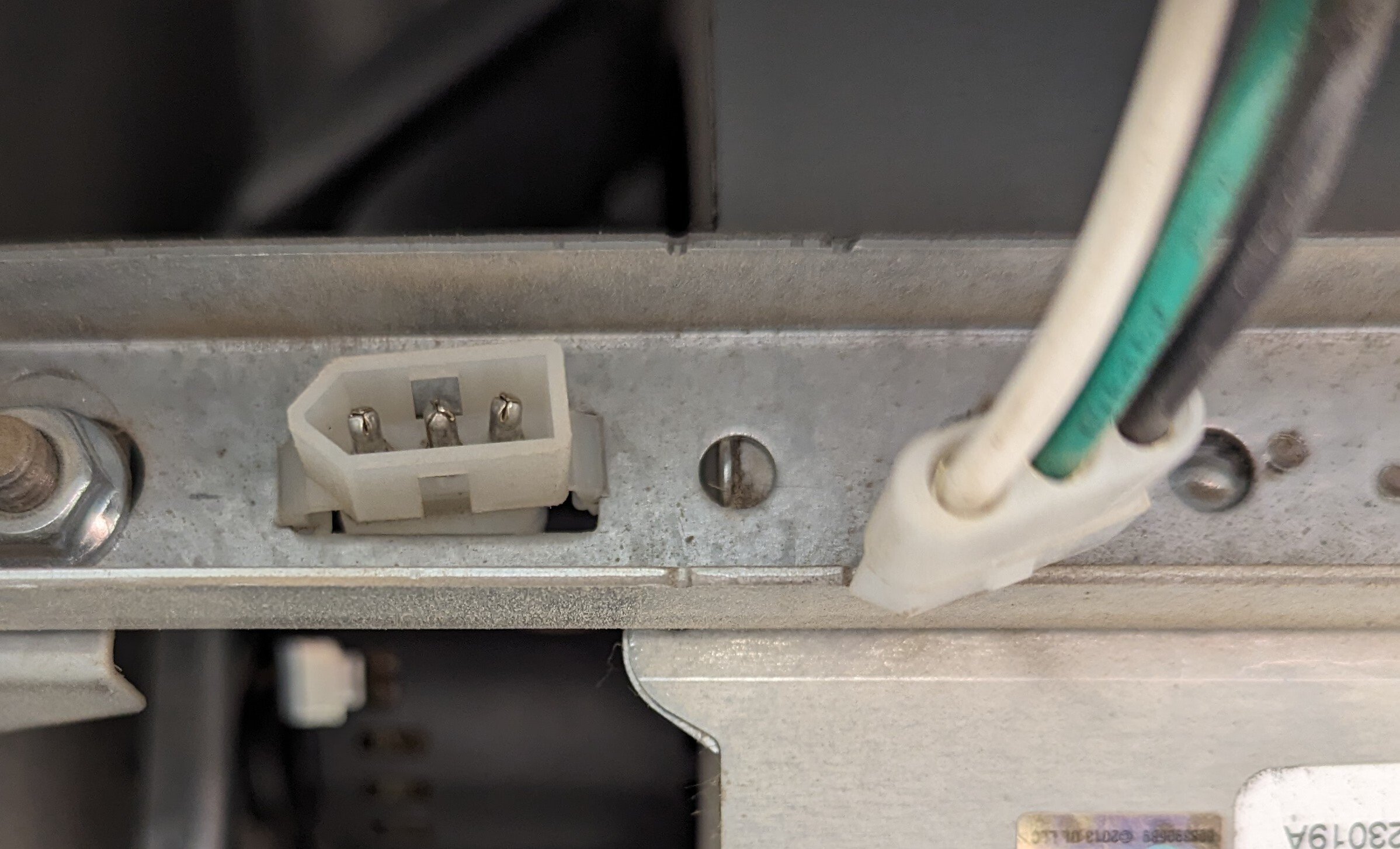I'm looking to install some cutoff switch on this 3-pin connector. It almost looks like a PC 4-pin 12v connector, but it actually connects to a Broan CRV motor. Specific model is the L150L.
I originally wanted a ventilator with a timer, but they installed an inline CRV (intake only) with a crazy 150CFM for a tiny 480sqft suite. Massively overkill, and loud. I'd prefer to put this on a timer, or even better would be a smart switch control. But at the very least a manual switch would be great.
For now, and for the last two years, I just have this unplugged, as shown in the image. The passive ventilation on the connected ducting has been more than enough to turn the air around. But sometimes it'd prefer to enable the intake for a time. I just can't have it on all the time because the air turnaround is nutty, not to mention the blast of cold air in the middle of winter.
Any ideas for a switch that fits this connector, or a DIY switch, and/or something to hook to a timer, OR smart switch somehow?

Last week I installed a 3 pole fan switch for the bathroom extractor to over ride the dodgy humidity sensor it has. It gets turned it on and off manually now. I have a replacement fan ready to install, but I need to cut out 3mm of glass to get it to fit. I am going to wait for the summer in case the worst happens and the glass shatters. This is why I could answer what you needed.
This is similar to the switch I used with a 25mm box to mount it. You can buy a metal mounting box, if you want to bury the fitting.
I prefer a fixed placement box over the loose cable of a rocker switch. Some of the rocker switches have poor cable retention systems, which can result in the cable coming loose over time. Moreso when using thicker cabling. I don't mind rockers for lighting, but for fixed hardware, its not my first choice, and tbf a rocker switch doesn't look very nice if it is on permanent display.
I wouldn't wire up a dimmer switch to a motor. It can cause the motor to stall between poles, which can result in a component becoming hot.
https://www.ecmweb.com/